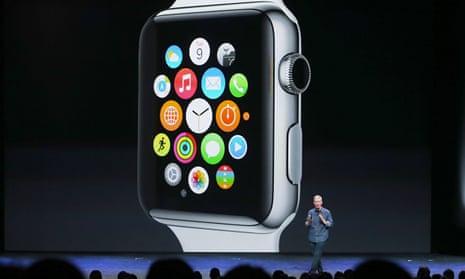Confirmation of the release date for Apple’s next major firmware update iOS 8 was for the most part overshadowed on Tuesday with the Californian tech giant unveiling the iPhone 6, iPhone 6 Plus, the Apple Watch, and the new Apple Pay mechanism. Despite that, the new operating system that the majority of their devices will run should be of great significance to brands and marketers looking to reach more consumers. iOS 8 is centred around the concept of integration, and brands can implement their products and services into more of the device than ever before.
Greater insight into consumer behaviour
Britain’s fitness fixation has grown exponentially over recent years. There are now hundreds of calorie counters, run trackers and health monitoring apps in the App Store, including offerings from commercial giants such as Nike. Apple’s acknowledgement of this market will help those brands become more useful on the new iPhones, and the new Health app will comprise data from the tools people use to monitor their wellbeing, presenting it in a unified dashboard.
The apps can communicate with each other too, meaning details of your sleep patterns will give Nike a better understanding of how to improve your performance – and recommend you products accordingly. Health is a delicately personal issue, and Apple’s prioritisation of the field should be of interest to health and fitness brands looking to increase their exposure in the tech market.
The “smart home” is increasing in popularity, and users will be able to lock doors and switch off lights remotely using their iPhone, iPad or Apple Watch. As the technology becomes more widely used, an increasing number of brands will surely move into this market, where smartphones and tablets are undertaking general utilities. It’s great to be able to play Candy Crush on your way home from work, but the ability to turn on the oven from 40 miles away gives home appliance brands unprecedented licence to revolutionise their products. Haier and Honeywell are two of the impressive names already announced as partners, and Phillips released a prototype screenshot of how users might be able to control their Hue ambient lighting system with iOS 8.
Wearable tech provides more ways to engage
Successful brands connect with their customers on a personal level, and Apple’s most recent product announcement should make that simpler than ever. The Apple Watch, which resembles the company’s first foray into the wearable technology market, will feature two health apps – Activity and Workout – providing wearers with measurements of their daily fitness activity. A new feature called WatchKit will also let brands develop their own apps for the Apple Watch. The BMW app will let drivers both locate and check the charge status of their i3 car, Honeywell’s app will allow in-house temperature control, and American Airlines passengers can carry their boarding pass on their watch. Products have never been closer to customers, and as the development of Apple Watch continues companies will find innovative new ways to bring their services literally to their customers’ wrists.
A more immersive user experience
Interactive notifications will now allow users to respond while conducting a different task, meaning brands might not even need a user to be in their app to generate usage of their product. Companies can bring suggestions and requests from their product into all aspects of the operating system; you could be prompted to submit your usual Tuesday evening Domino’s Pizza order while you’re busy responding to an important email, for example.
Third-party widgets will bring real-time information from apps on to any screen throughout the operating system. Previously exclusive to Apple apps, brands can now get in on the action too, and we have already seen an example of how they might use the new feature with their services. eBay users will be able to bid on items from a widget, as was demonstrated by Apple’s senior vice president of software engineering, Craig Federighi, in July 2014.
Big news for big brands
On balance, there’s little doubting how exciting iOS 8 is for users, developers and brands. Since the first build of the operating system in 2007, the general functionality and structure that it uses has not drastically changed. For that reason, people around the world have developed a familiarity and understanding of the elegant and practical interface. With brands now granted a licence to expand their apps and services into more of the OS than ever before, people will be able to connect with products in a way previously unthinkable.
George Gabriel is a marketing executive at Future Platforms
More like this
Can co-design help wearable technology take off?
Wearable technology hasn’t taken off in the way it was expected to – why not?
To get weekly news analysis, job alerts and event notifications direct to your inbox, sign up free for Media Network membership.
All Guardian Media Network content is editorially independent except for pieces labelled ‘Advertisement feature’. Find out more here.

Comments (…)
Sign in or create your Guardian account to join the discussion